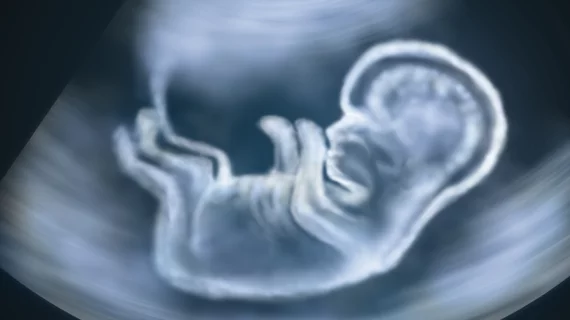MRI should be a standard diagnostic tool for fetuses with known congenital heart disease
Researchers have uncovered connections between congenital heart disease (CHD), structural brain anomalies (SBA) and extracardiac anomalies (ECA) on fetal MRI scans. The anomalies were present from mid-gestation and could be a predictor of future neurodevelopmental outcomes, according to recently released findings.
Discovering these abnormalities prior to birth increases the likelihood of positive long-term outcomes. Fetal MRI has emerged as a valuable tool for visualizing infant anatomy in utero, though it is not yet routinely utilized as a standard of care.
“MRI in fetuses with CHD and normal, suspicious, or abnormal extracardiac ultrasound findings improves diagnostic accuracy, especially for the fetal brain,” Gregor O. Dovjak, MD, PhD, with the Division of Neuroradiology and Musculoskeletal Radiology at the Medical University of Vienna, and co-authors explained.
The MRI findings of 429 fetuses with known CHD were examined for the study. Extracardiac anomalies were present in 56.6%, with the brain being the most affected organ system (seen in 25.4% of fetuses with ECA). This finding is significant, the experts explained, as there is little evidence currently available that links any specific organ system abnormalities to CHD.
Structural brain anomalies were seen in 25.4% of imaging exams. Irregularities in midbrain/hindbrain development, as well as with the cerebrospinal fluid spaces were most commonly linked to SBA.
The scans were conducted between the fetal ages of 17-38 weeks. When the researchers compared the MRI results to the gestational age of the fetuses, they found no significant differences in prevalence or patterns of ECA in early (<25 weeks) versus late (>25 weeks) gestational age.
Currently, sonography is the standard of care for monitoring fetal cardiac abnormalities, though the authors note that the results of their research indicate that MRI is a valuable diagnostic tool for the early detection of prenatal malformations and could be more routinely utilized.
“Because overall outcome in CHD strongly depends on the presence and severity of additional anomalies, such as SBA, accurate prenatal diagnosis using fetal imaging modalities is essential in all types of CHD,” the authors concluded.
You can view the detailed research in the Journal of the American College of Cardiology.

